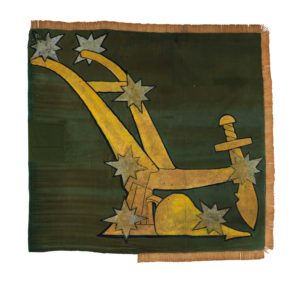When Sean O’Casey wrote The Plough and the Stars 97 years ago, he included a few references that would have been well-known to audiences of the time but are less familiar to contemporary viewers. Here’s some information to keep you in the know:
Easter Rising of 1916: The setting for The Plough and the Stars. For information, read this section in your program’s “Brief History of the Irish Revolutionary Period.”
Irish Citizen Army (ICA): a well-organized paramilitary socialist organization made up of trained volunteers from the Irish Transport and General Workers’ Union. Originally formed in 1913 to protect trade union workers during labor strikes, the ICA became a revolutionary army, participating in the Easter Rising of 1916 and in the War of Independence in 1921. Sean O’Casey was very involved in the ICA’s early years, but he withdrew in 1914, criticizing the group for wavering in its socialist mission under James Connolly’s leadership. In The Plough and the Stars, Jack Clitheroe is a Commandant in the ICA.

The Plough and the Stars (Flag): (Image to the left) The title of this play references the flag of the Irish Citizen Army, sometimes called the “Starry Plough.” The flag depicts the constellation Ursa Major (the Big Dipper, called “The Plough” in Ireland) over a plough on a green flag. It symbolized a free Ireland that would control its own destiny by controlling its means of production… “from the plough to the stars.” During the Easter Rising of 1916, the flag was raised above the Imperial Hotel when it was occupied by the ICA. That building was among the first to burn during the Rising.
Tricolor Flag of Ireland: During the Easter Rising, the Irish tricolor flag was flown as well as the Starry Plough; it began to be seen as the national flag whit it was raised above Dublin’s General Post Office by the revolutionaries, and was has been the official flag of Ireland since it gained independence. Its three colors signify a lasting truce (white) between the Catholics (green) and Protestants (orange).
General James (Jim) Connolly: a co-founder of the Irish Citizen Army (ICA) with James Larkin, Jim Connolly was an Irish republican and socialist leader. He was a leader of the Easter Rising and organized the ICA to join the fight. In The Plough and the Stars, Jack Clitheroe is an ICA Commandant under Connolly. After the rising, Connelly was executed by firing squad despite the fact that he was already dying from wounds sustained during the fight. He was carried out on a stretcher and tied to a chair for the execution, a cruel act that turned public opinion against the British.
Irish Volunteers: The bulk of the revolutionary fighters during the Easter Rising belonged to the military arm of the Irish Republican Brotherhood known at the Irish Volunteers. They fought alongside the much smaller but better-organized ICA.
Dublin Fusiliers: An Irish infantry Regiment of the British Army that began in 1881 and continued until the creation of the Irish Free State in 1922. Irish soldiers who fought for the British in World War I were generally Dublin Fusiliers. In The Plough and the Stars, Bessie Burgess’s son is a member.
Tommies: a general term for British soldiers.
Orange: Mrs. Gogan refers to Bessie as “Orange” – meaning she is a Protestant loyalist, a fact that would have been clear to Irish audiences at the time through contextual references to her hymn-singing, her support of the British in The Great War, and her mockery of her Catholic neighbors
Harp: The official emblem of Ireland; harps are a symbol of national pride and tradition.
Shinner: A pejorative term for a supporter of Sinn Féin, an Irish political party that supported the creation of an independent Irish Republic during the Easter Rising.
